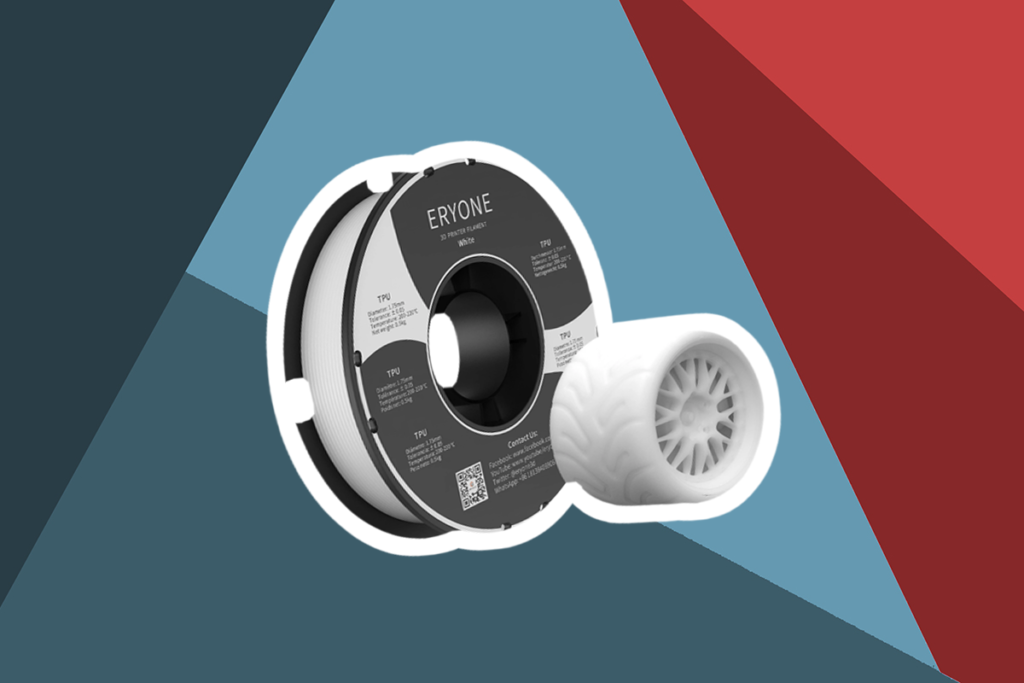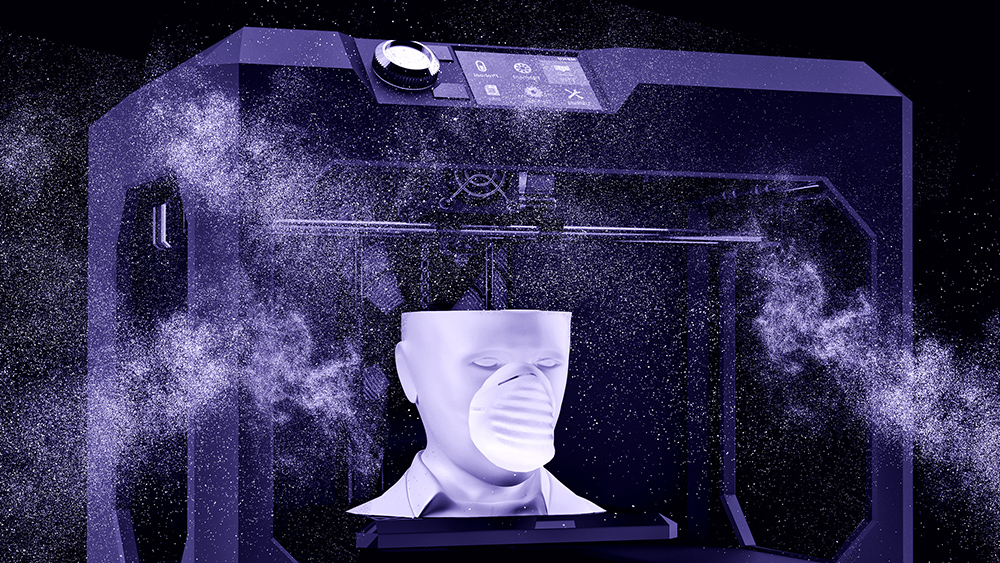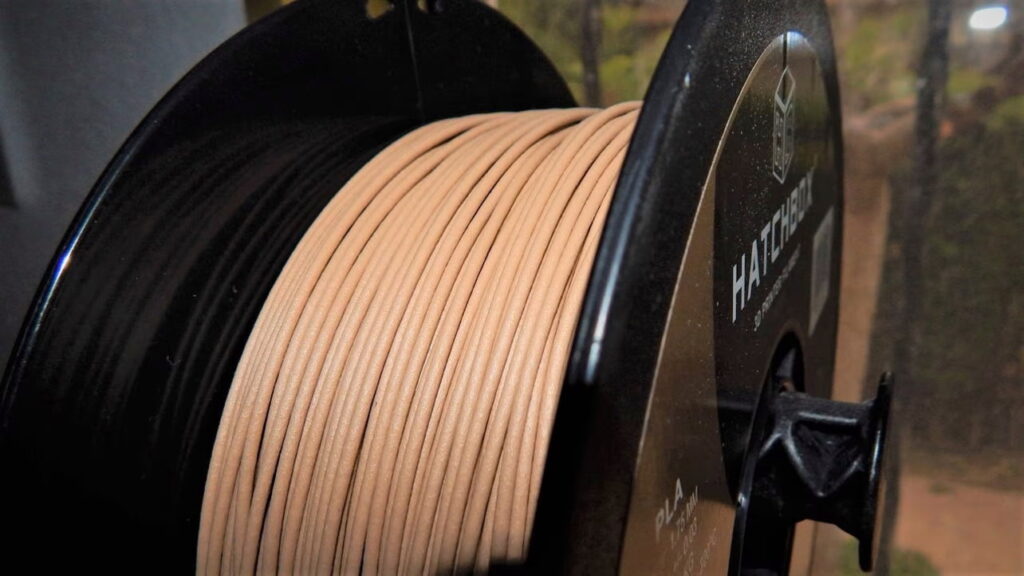

Printing TPU isn’t usually very easy, and this is due to its elasticity as a flexible filament. But when you know how to handle it, you’ll enjoy its extreme versatility.
Material properties such as impact resistance, vibration dampening, and shock absorption make TPU unique. There’s no limit to the possibilities it gives to 3D printing.
In this guide on how to print with TPU, we provide you with all the important things you need to know about printing with TPU.
You’ll be learning everything about TPU, the upsides and the downsides of TPU 3D printing, the appropriate TPU printing temperature, and how to get the best of it by using the right settings.
The elastic, flexible material called TPU signifies Thermoplastic Polyurethane. The TPU is renowned for its remarkable versatility, durability, and high strength. Automotive industries, fashion professionals, hobbyists, athletes, and medical personnel commonly use it to fabricate products, tools, and parts.
The TPU derives its enhanced physical properties and high durability from its blend of rubber and hard plastic. Like ABS and PLA, it’s popular when it comes to 3D printer filaments, but what sets it apart is its extreme flexibility.
Nevertheless, printing with this TPU filament isn’t easy. The difficulty in dealing with the material can affect your print quality in the long run.
TPU is highly reputed for its versatility, abrasion resistance, and impact. This makes it unsurprising why it’s a top choice for 3D printers all over the globe. But even so, it’s important to know that this TPU 3D printing filament has upsides and downsides.
When it comes to 3D printing applications, there are lots of advantages TPU has to offer. If you’re working on any application that requires the elasticity of a silicone-like or a rubber substance, you can count on this flexible filament to save the day.
To enjoy the best results, you should use one of the best TPU 3D printers for your TPU material 3D printing.
TPU filaments are excellent for any application that requires less deformation and more strength. Their high shear strength makes them capable of the job.
The best TPU filaments have high durability against damage. All thanks to their impressive level of resistance to abrasion. The resistance to grease, oil, and other chemicals makes TPU plastic 3d printing a worthwhile task.
Like other flexible filaments, printing with TPU can be very difficult and frustrating. Certain 3D printers cannot handle the elasticity feature of the filaments. Plus, if the extruder utilizes a Bowden system, it cannot be very pleasant to push the prints through.
If you’re using TPU filaments, you cannot use just any printer. You may need to invest in one of the best enclosed 3D printers to make your prints come out perfectly.
More so, there’s also the need to use the appropriate TPU print settings. If these settings are ignored, there may be jamming and clogging. Compared to ABS and PLA filament materials, its strength level isn’t too impressive.
TPU materials boast resistance to an array of materials, but their tendency to absorb moisture easily makes them vulnerable to uneven extrusion and bubbling.
Lastly, using it in a high-heat or outdoor environment isn’t recommended because of its low tolerance for heat.
Thermoplastic polyurethane is what the term TPU refers to. On the other hand, a collection of distinct, flexible thermoplastic materials, which also includes TPU, is what the term TPE refers to.
TPE stands for thermoplastic elastomers (TPE). Most filaments that fall under the group of TPE have about 44A to 70A shore hardness. What separates TPU from other TPE-branded filaments is that it’s stronger and more rigid.
Other TPE flexible filaments don’t also have the greater abrasion resistance that TPUs possess. Again, most other TPEs do not promote a smoother surface like the TPU.
Nevertheless, other TPE filaments, besides TPUs, produce more curling, warping, and stringing. This is why most 3D printer users prefer TPUs.
To include, note that there’s no constrained specificity attributed to all thermoplastic materials that identify as TPEs. They all have varying functions and features. While some can resist solvents or acids, some are built to be water-resistant or heat-tolerant.
More so, the polymers the brand used in manufacturing the TPE can also influence the filament’s properties.
To get the best out of your TPU filament, you need to set the right temperature. About 210°C to 250°C is required for the TPU’s optimal nozzle temperature. The filament brand and your 3D printer are factors that must be considered to determine the exact temperature.
The filament’s shore hardness also plays a role in determining the print temperature settings. So, don’t forget to refer to your manufacturer’s guidelines and do some tests to confirm the perfect settings.
It’s advised that you keep the temperatures around 40-60 degrees Celsius if you decide to use a heated bed. Even so, be aware that most TPU brands don’t necessarily need a heated bed. Again, keep to the instructions of the manufacturer of the filament. Adhere to the range given for the bed and extruder temperature.
Some print materials can be printed quickly, but this is not for a flexible material like TPU. You’ll need to print slowly with TPU. You risk being vulnerable to excessive oozing and stringing, and extrusion if you attempt to print at a regular speed. This can also leave an unfortunate quality on the prints.
Without rushing, you can get the best results if you maintain a printing speed of 15 to 30mm/sec. This is what experts recommend. Nevertheless, you should also note that higher print speeds can be handled by specially-formulated TPUs made for easy and quick printing.
If you plan to print at a high temperature or/or high speed, you may need a cooling fan. But if this is not the case, then there’s no need for a cooling fan.
During the first layer, the cooling fan shouldn’t be on for the bed adhesion to record better success. When you get to the next layer, you may choose to then turn the cooling fan on.
Not all print users fancy 3D printing TPU filament with an enclosed 3D printer. But you can choose to use this printer or not for your TPUs, and there’s nothing to worry about.
Unlike PETG and ABS, TPU doesn’t split or warp too easily. All thanks to its print temperature. More so, TPU filaments can be used comfortably indoors. They barely give off an odor and don’t emit too many fumes.
Retraction doesn’t really go well with flexible filaments. It can alter the diameter of the filament by stretching it too far. This can create issues such as stringing, blobbing, difficulty with the extruder system and nozzle, clogging, and immoderate extrusion.
Thus, turning off retraction completely is a requisite to easily 3D print with TPU filaments. Nevertheless, certain print users love to use retraction. If you need to, you need to keep the settings very low. You should also check out the specifications laid out by the manufacturer to guide you on the retraction settings.
You need to be careful with the layer height when printing TPU filaments. Thus, make sure that it’s about 0.1mm. That is the optimal layer height. This helps to ensure that the flexible filament doesn’t get too extruded by the nozzle.
Given that the layer lines aren’t too noticeable, there’s a cleaner print offered by the smaller layer heights. Unlike other filaments that can be post-processed or sanded smooth, TPU can’t. So, keep the later heights small.
The way you store PLA is not different from how you store TPU filaments. Foremost, note that these two materials cannot resist moisture, and as such, they’re vulnerable to blobbing, uneven extrusion, and bubbling amidst other possible related issues. So, if you’re not ready to use your TPU filament, do well to keep it well-packaged and sealed in a vacuum.
You can find a filament dry box to store the filament if you’ve already opened it and you’re using it intermittently. If your TPU filament contains excess moisture, you can remove this by using a dry box that comes with a heating feature.
Trapped moisture can also be absorbed in a storage container with desiccant pouches. You can also find an oven on a low setting, a filament dryer, or a food dehydrator to put in your filament spool if it has absorbed too much moisture.
Here are some of the frequently asked questions about Printing TPU;
1. Which is better, TPU and PLA?
It’s difficult to outrightly say PLA is better than TPU or TPU is better than PLA. It’s what you seek in a filament that will determine the better option you should go for. TPU is known for durability and flexibility, while PLA makes filament printing easier. Use your specific need to determine which option is better.
2. Is TPU food-safe?
The kind of filament you are using and the particular brand you purchase will determine if the TPU is food-safe or isn’t.
While it should be noted that TPU filaments aren’t usually food-safe, you can still purchase nontoxic ones like the Overture TPU Filament 1.75mm on the market. Most importantly, be meticulous with your food-related projects by checking with the manufacturer before proceeding with the usage.
3. Do you need a direct drive to print TPU?
TPU filaments can be quite uneasy to print. This is why it’s usually advised to use direct drive extruders. With this, the chances of clogs and jams will be significantly reduced. More so, there will be room for better extrusion. Nevertheless, you can still print TPU with the right settings successfully on quality printers with a Bowden extruder.
Truthfully, there’s no limit to the stunning designs you can carve with TPU filaments. But even so, the intricacies in handling these filaments can make one think twice before going for them.
Experts recommend using a high-quality TPU filament like the 3D BEST-Q Flexible TPU 1.75mm 3D Printer Filament that won’t make your work to be more cumbersome.
More importantly, you should do well in setting the right settings and using a good 3D printer because not all 3D printers can deal with the elasticity of TPU.
Overall, we hope that we’ve been able to provide you with everything you need to know to make printing TPU less stressful and more relaxing





